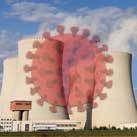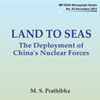Iran’s Nuclear Imbroglio at The Crossroads: Policy Options For India
On account of pertinent international, regional and domestic dynamics, the Iranian nuclear imbroglio is at uncertain crossroads. There are however reasons for optimism. This is because of Iran’s continuing engagement with the IAEA and P5+1 and strong opposition from major powers to a military solution. In the light of the above dynamics, the Paper points out dilemmas being encountered by India and ends by exploring possible policy options in the evolving situation.
- S. Samuel C. Rajiv
- 2012















